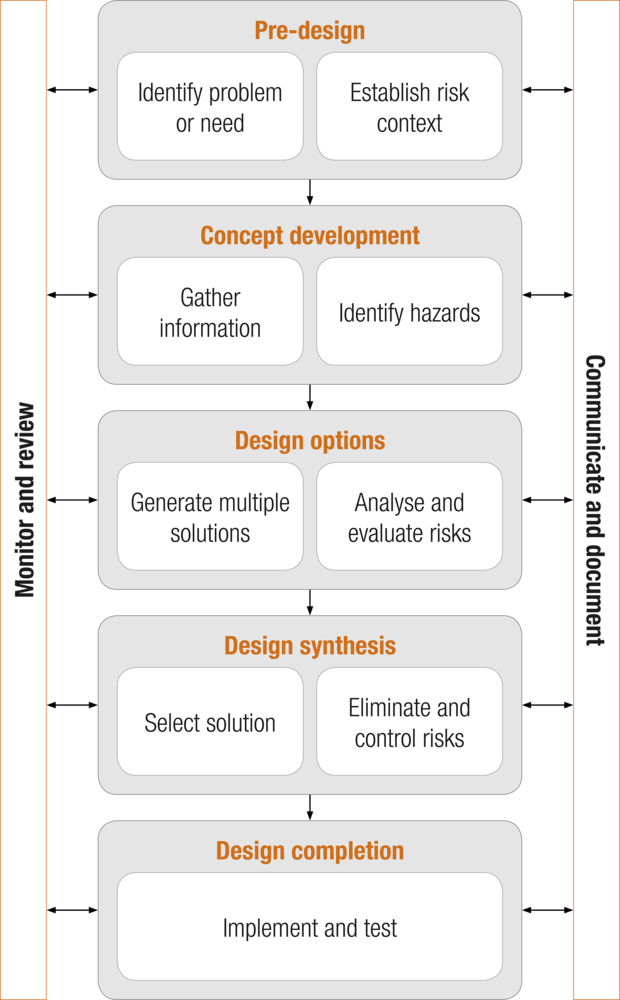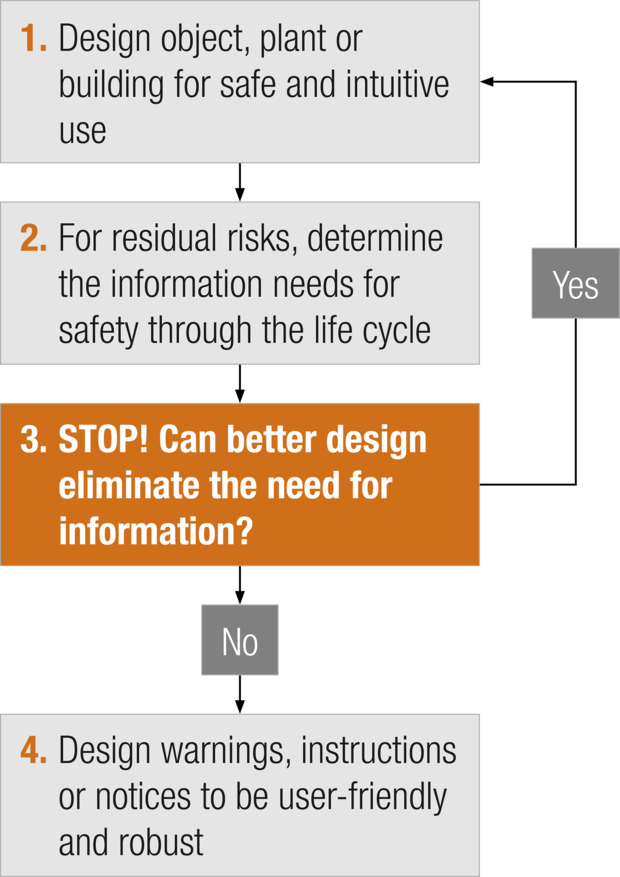On 31 March 2022, the Work Health and Safety (WHS) laws replaced the health and safety elements of the Mines Safety and Inspection laws. For information visit www.demirs.wa.gov.au/whs
Transitional arrangements may be in place for the compliance requirements on this page.
All health and safety notifications, forms and guidance for mining and petroleum has moved to the WorkSafe website
What are the principles of safe design?
Get it right the first time
Opportunities to create safer workplaces are most effective when identified, assessed and documented in the earliest phases of the product life cycle.
The most effective risk control measure is to eliminate the hazard. This is often cheaper and more practical to achieve early at the design or planning stage, rather than making changes later in the life cycle.
See What is the hierarchy of control? in How is risk controlled?

Principles
The five principles that impact on achieving a safe design are described below.
Principle 1: Persons with control
The people who make decisions should be competent and understand that their decisions will affect the design of products, facilities or processes, which means they can promote health and safety at the source.
Principle 2: Product life cycle
Safe design applies to every stage in the life cycle from conception through to disposal. It involves eliminating hazards or minimising risks as early in the life cycle as possible.
Principle 3: Systematic risk management
The consistent application of hazard identification, risk assessment and risk control processes is required to achieve safe design.
Principle 4: Safe design knowledge and capability
Should be either demonstrated or acquired by persons with control over design.
Principle 5: Information transfer
Effective communication and documentation of design and risk control information between all persons involved in the phases of the life cycle is essential for the safe design approach.
Why is safe design important for risk management?

A safe design approach has many benefits, including:
- simplified risk control
- prevention of injury
- improved usability of products, systems and facilities
- a more informed ability to meet legislative responsibilities
- a reduced need for redesign and retrofitting, and its associated costs
- innovation.
Safe design supports a collaborative risk management approach and is particularly important for construction projects. This means that people with knowledge of each phase of the project (from design to use to demolition) should be consulted at the design stage to identify problems and solutions.
Principal employers and users should provide information to designers, manufacturers and suppliers to help them achieve a safe design for the building or structure at the mine site, not only for those doing the construction, but also those who will use, clean and maintain the building or structure, and, ultimately, decommission it.
Related information
SafeWork Australia’s Code of practice - Safe design of structures contains guidance for those involved in the design of structures in the workplace, such as architects, building designers and engineers, as well as those who influence the decision-making process, such as clients and builders.
SafeWork Australia’s Guidance on the principles of safe design for work was developed to support the priority approach of eliminating hazards at the design stage.
